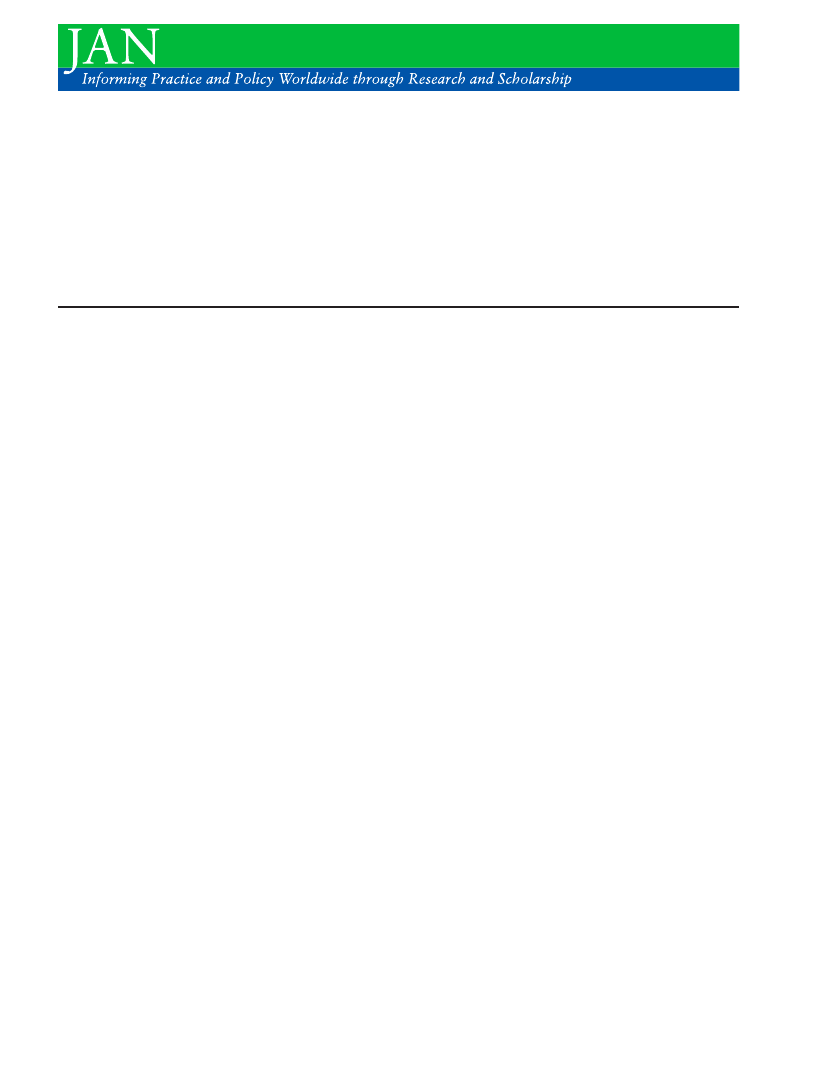
ORIGINAL RESEARCH
Experiences of parents whose sons or daughters have (had) attempted
suicide
Niels Buus, Jimmy Caspersen, Rasmus Hansen, Elsebeth Stenager & Elene Fleischer
Accepted for publication 3 August 2013
Correspondence to N. Buus:
e-mail: [email protected]
Niels Buus PhD RN
Associate Professor
Institute of Public Health, University of
Southern Denmark, Odense, Denmark
Jimmy Caspersen MHs RN
Clinical Nurse Specialist
The Mental Health Services in the Region
of Southern Denmark, Odense, Denmark
Rasmus Hansen
Research Assistant
Network for the Suicide Struck (NEFOS),
Odense, Denmark
Elsebeth Stenager PhD MD
Consultant Psychiatrist
The Mental Health Services in the Region
of Southern Denmark, Odense, Denmark
Elene Fleischer PhD
Counsellor and Daily Leader
Network for the Suicide Struck (NEFOS),
Odense, Denmark
BUUS N., CASPERSEN J., HANSEN R., STENAGER E. & FLEISCHER E. (2014)
Experiences of parents whose sons or daughters have (had) attempted suicide.
Journal of Advanced Nursing
70(4),
823–832.
doi: 10.1111/jan.12243
Abstract
Aim.
The aim of this exploratory study was to gain further insights into the
experiences of parents of sons or daughters who have attempted suicide and how
these parents respond to the increased psychosocial burden following the suicide
attempt(s).
Background.
Suicide is a major public health problem and relatives are
understood as playing an important role in suicide prevention; however, suicide
and suicidal behaviour affect the relatives’ lives profoundly, both emotionally and
socially, and the psychosocial impact on families is underresearched.
Design.
Focus groups with parents of sons or daughters who have attempted
suicide.
Methods.
In January and February 2012, we interviewed two groups of parents
recruited at a counselling programme for relatives of persons who have attempted
suicide. The analysis combined a thematic analysis with a subsequent analysis of
how the themes were negotiated in the conversational interactions. The findings
were interpreted and discussed within an interactionist framework.
Findings.
The participants in the study described their experiences as a double
trauma, which included the trauma of the suicide attempt(s) and the subsequent
psychosocial impact on the family’s well-being. The pressure on the parents was
intense and the fundamentally unpredictable character of suicide attempts was
frequently emphasized.
Conclusion.
Being the parent of a child who attempts suicide meant managing a
life-threatening situation and the additional moral stigma. In part, the
participants did this in the group by negotiating the character of the suicide
attempt(s) and who was responsible.
Keywords:
adolescence, attitudes to mental illness, family relations, focus groups,
injuries, nursing, parental attitudes, psychosocial, qualitative studies, self-inflicted,
suicide, support
©
2013 John Wiley & Sons Ltd
823